
Flash Gordon is the protagonist of a space adventure comic strip created and originally drawn by Alex Raymond. First published January 7, 1934, the strip was inspired by, and created to compete with, the already established Buck Rogers adventure strip.

Comics is a medium used to express ideas with images, often combined with text or other visual information. It typically takes the form of a sequence of panels of images. Textual devices such as speech balloons, captions, and onomatopoeia can indicate dialogue, narration, sound effects, or other information. There is no consensus among theorists and historians on a definition of comics; some emphasize the combination of images and text, some sequentiality or other image relations, and others historical aspects such as mass reproduction or the use of recurring characters. Cartooning and other forms of illustration are the most common image-making means in comics; Photo comics is a form that uses photographic images. Common forms include comic strips, editorial and gag cartoons, and comic books. Since the late 20th century, bound volumes such as graphic novels, comic albums, and tankōbon have become increasingly common, along with webcomics as well as scientific/medical comics.
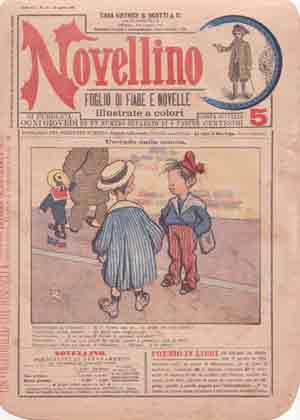
Italian comics, also known as fumetto, plural form fumetti, are comics that originate in Italy. The most popular Italian comics have been translated into many languages. The term fumetto refers to the distinctive word balloons that contain the dialogue in comics.
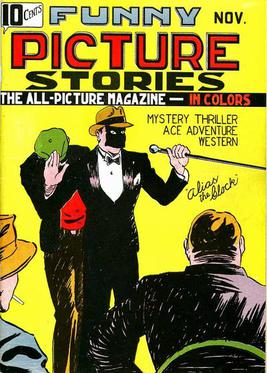
The Clock is a fictional masked crime-fighter character created in 1936, during the Golden Age of Comic Books. He was the first fully-masked hero to appear in American comic books.
National Periodical Publications Inc. was an American comic book publishing company. It was the direct predecessor of modern-day DC Comics.

More Fun Comics, originally titled New Fun: The Big Comic Magazine, was a 1935–1947 American comic book anthology that introduced several major superhero characters and was the first American comic book series to feature solely original material rather than reprints of newspaper comic strips. It was also the first publication of National Allied Publications, the company that would become DC Comics.

Trina Robbins was an American cartoonist. She was an early participant in the underground comix movement, and one of the first women in the movement. She co-produced the 1970 underground comic It Ain't Me, Babe, which was the first comic book entirely created by women. She co-founded the Wimmen's Comix collective, wrote for Wonder Woman, and produced adaptations of Dope and The Silver Metal Lover. She was inducted into the Will Eisner Hall of Fame in 2013 and received Eisner Awards in 2017 and 2021.

linus is an Italian comics magazine published in Italy since 1965. It is the first Italian magazine exclusively focused on comics. During a period of crisis, the magazine was not published in May and June 2013, but returned in July, published by Baldini & Castoldi.
The Corriere dei Piccoli, later nicknamed Corrierino, was a weekly magazine for children published in Italy from 1908 to 1995. It was the first Italian periodical to make a regular feature of publishing comic strips.
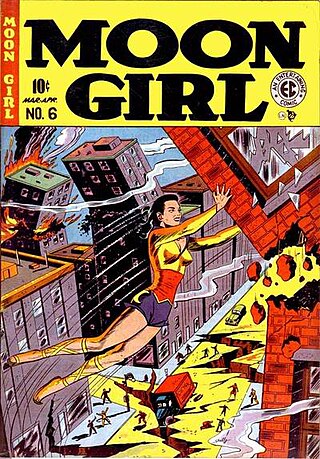
Moon Girl is a fictional character published by EC Comics from 1947 to 1949. Moon Girl is a character from the Golden Age of Comic Books and has since passed into the public domain. Her secret identity is Claire Lune, a junior high history teacher.
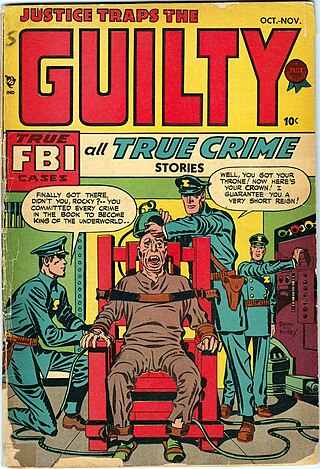
Justice Traps the Guilty was an American comic book title, a publication of the crime comics genre created by Joe Simon and Jack Kirby and published by Prize Comics from 1947 to 1958. It followed the successful revamping of Headline Comics by Simon and Kirby, beginning in March 1947.
Comics has developed specialized terminology. Several attempts have been made to formalize and define the terminology of comics by authors such as Will Eisner, Scott McCloud, R. C. Harvey and Dylan Horrocks. Much of the terminology in English is under dispute, so this page will list and describe the most common terms used in comics.
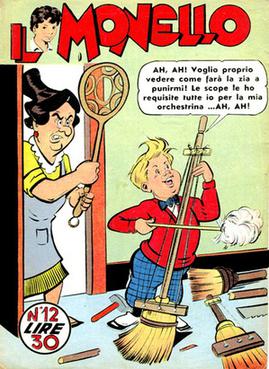
Il Monello was a weekly comic magazine for kids and teens published in Italy from 1933 to 1990.

The Hernandez brothers, also known as Los Bros Hernandez, are the three American cartoonist brothers Mario (b. 1953), Gilbert (b. 1957), and Jaime Hernandez (b. 1959).
Federico Pedrocchi was an Italian comic book artist and writer. He sometimes used the pen name Costanzo Federici. He founded the magazine Paperino e altre avventure in 1937, and wrote some of the earliest Disney comic book stories.

Orient Express was a monthly comic magazine published in Italy from 1982 to 1985.
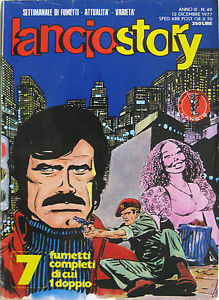
Lanciostory, sometimes spelled as Lancio Story or LancioStory, is a weekly comic magazine published in Rome, Italy, from 1975.

Micky Maus is a German comics magazine containing Disney comics. It has been published since 1951 by Egmont Ehapa.
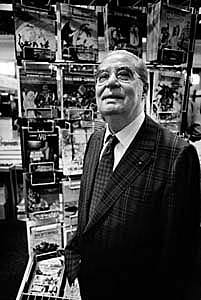
Georges Dargaud was a French publisher of comics, most famously Tintin magazine, Asterix, and Lucky Luke, through his Dargaud company.
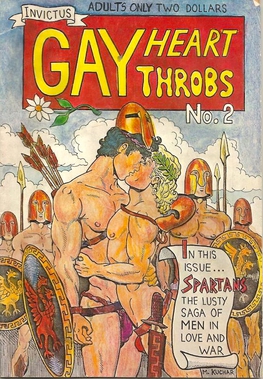
Gay Heart Throbs was an underground comic featuring gay erotica. Only three issues were published, in 1976, 1979, and 1981. It has been described as the first gay comic. It was edited by Larry Fuller.















